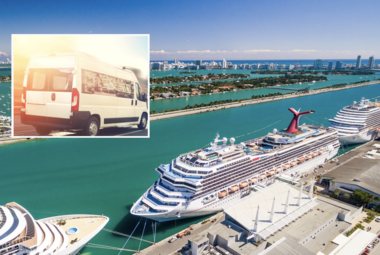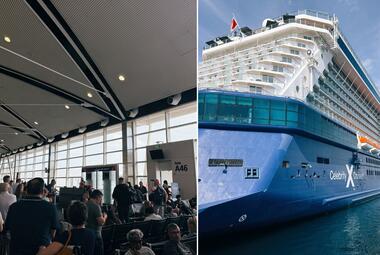The Caribbean is one of the most popular year-round cruising destinations, but that doesn't mean the weather is consistent. Additionally, certain months are more expensive than others.
Whether you're looking to avoid the risky hurricane season or want the best bang for your buck, it's important to know the pros and cons of cruising to the Caribbean during each time of year.
Some months fall within the region's wet season, while others are more crowded. However, there are times known for milder temperatures and better deals as well.
The worst months to cruise to the Caribbean are July, August, and September
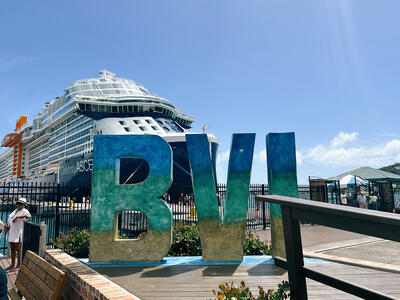
During the Caribbean's wet season, which runs from the beginning of May through October, the region is subject to more rainfall. These months also have higher average temperatures.
It's no coincidence that the Atlantic hurricane season falls within the Caribbean's wet season. Although your safety won't be at risk if you decide to cruise during the hurricane season, the chance of your itinerary being impacted increases during these months — particularly August, September, and October, when over 95% of major hurricanes form.
For example, during the 2024 hurricane season, Hurricane Milton disrupted at least 15 itineraries. Celebrity Reflection wasn't able to call at Key West, Florida. Instead, she visited Nassau, Bahamas, before docking at Perfect Day at CocoCay.

A few weeks earlier, Hurricane Helene did the same while tearing through the Gulf. Thankfully, cruise ships are floating resorts, with different activities and events to keep guests entertained. If you sail during hurricane season and your itinerary gets adjusted, rest assured knowing the crew will do everything possible to make your vacation enjoyable.
In addition to possibly disruptive weather, the higher temperatures can also be unpleasant. It's not uncommon to see temperatures in the high 90s. Combined with high humidity, this can make port days feel exhausting.
Fewer ships sail to the Caribbean during the summer, too. Most cruise lines increase their deployment to the region during the dry season, sending vessels elsewhere — including Alaska, Bermuda, Europe, and Canada/New England — in the summer. As such, you'll have more ships and itineraries to choose from during the winter.
That said, some of the cheapest months to book a cruise to the Caribbean are also the worst months to cruise to the Caribbean
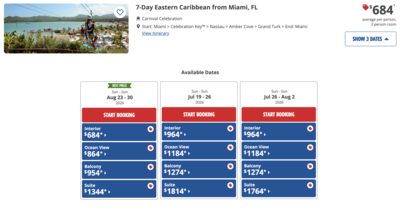
Whether you want to save money or encounter fewer crowds, there are definitely advantages to cruising during the "worst" months to the Caribbean.
The majority of American kids return to school sometime in August or early September, so you'll typically see fares for Caribbean cruises decrease around that time since demand isn't as high as the peak summer months.
A 7-night cruise aboard Carnival Celebration departing on July 19, 2026, for example, starts at $964, whereas the same itinerary departing in late August starts at around $684 per person for an interior cabin.
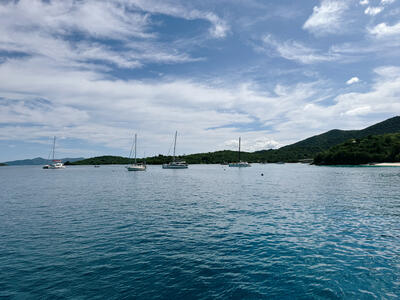
If traveling with one other guest, you'd save over $550 on the cruise fare! This is money that could be allocated toward add-ons like Carnival's pricey drink package, shore excursions, and more.
As peak season subsides, the crowds begin to thin out, too. Even if your cruise ship is fully sold out, the islands likely won't be as crowded as during July and early August, as the demand for tourism typically decreases when school resumes.
The best months to cruise to the Caribbean are January and May
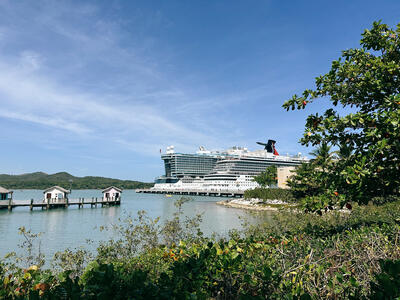
Following the busy holiday season, cruise prices in January decrease. Although the Bahamas is subject to the occasional cold front, those embarking on voyages to the Caribbean will usually enjoy warmer, but not unbearable, temperatures.
For example, the average high in Mexico in January is around 80 degrees. Similarly, the average high in St. Maarten is 83 degrees.
Additionally, May is another good month to cruise to the Caribbean. While it's technically part of the region's wet season, it doesn't see as much rainfall as the months in the latter half of the season.

One of the biggest cons of cruising during January or May is that most school holidays don't fall within these months, which can make planning for families tricky. Moreover, you may not want to waste valuable PTO in January right after the holidays.
Read more: What is the best month to cruise to the Caribbean?
Travel insurance is necessary whether you're cruising to the Caribbean during the best or worst months

Life doesn't stop when we are on vacation. From unexpected injuries to flight delays, a lot can go wrong before or during your cruise, regardless of when you're sailing. As such, it's important to always be prepared.
Travel insurance ensures that you're protected if things don't go as planned, providing peace of mind to travelers in the event something goes astray on vacation. Typically, the price is around 6-15% of the total cruise fare.
Each cruise line has its own version of travel insurance that guests can purchase when booking. Although the exact coverage varies, expect things like travel delays, luggage mishaps, and medical emergencies to be covered. You'll also usually have 24/7 access to a dedicated travel hotline for immediate assistance.
Read more: Cruise travel insurance and why you need it




